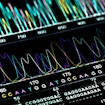Half a century ago, the introduction of karyotyping transformed human genetics and clinical diagnostics by opening access to gross changes in chromosomes, revealing an entire class of previously undetectable genetic lesions. More recently, new technologies have refined our ability to search for genetic variants that cause disease. Yet in autism spectrum disorders (ASDs), a large proportion of genetic contribution still remains unexplained. Classes of chromosomal alterations that can cause loss-of-function mutations, namely balanced and complex structural variation (SVs), and copy number variants (CNVs), below the threshold of microarray — collectively referred to as cryptic SVs — remain to be fully considered for their potential contribution to ASD.
